Although far from ideal (many of the x-axis column labels are missing) this chart shows the number of libraries using a particular item_type:
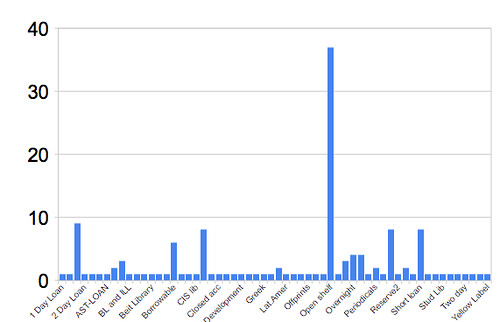
Omitting singletons, we get the following duplicated types (count loan_period is actually a count of the number of libraries using the corresponding item_type):
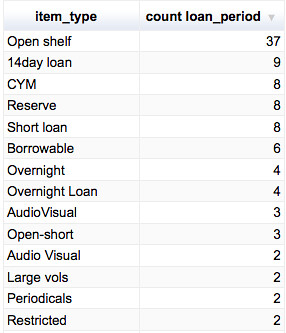
(Arghh - the data appeared to have a handful of duplicates... Never mind - if you discount the CYM and 14day Loan rows (!), the table is more or less correct (and it was intended only to be indicative anyway, given the sample of College and Department libraries used). Note: this disclaimer applies to the charts shown above and below as well!)
Within a particular item_type, there may be significant differences in the actual loan periods, which might cause confusion for an undergraduate who has borrowing rights in more than one library using nominally the same item_types.
So for example, if we look at Short Loans:
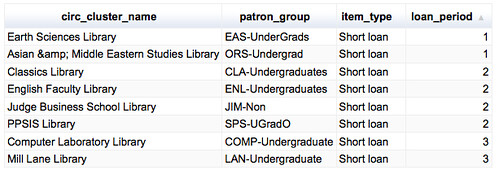
Reserve:

or Overnight related:
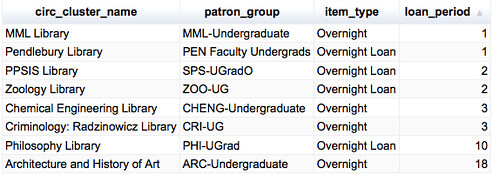
we see that different Libraries interpret the same nominal item_type differently.
The case of Open Shelf is even more extreme: again the chart is not ideal (it was generated using my Google Datastore explorer tool which still needs some work!), but what it indicates is the loan period (y-axis, in days) for Open Shelf items across a wide selection of libraries:
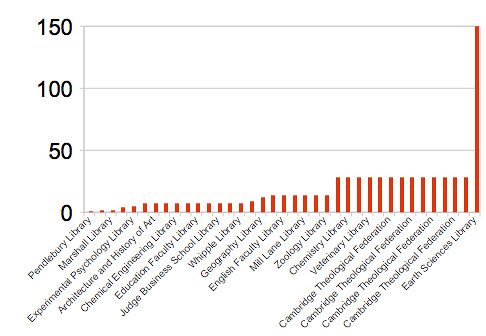
The most popular periods are 7, 14 and 28 days (can you spot where the duplicate entries came from?;-).
Now it might well be that the borrowing needs of undergrads across different departments and colleges is necessary, and represents differences in study patterns associated with courses in a particular department (or teaching style in a particular college?), or it might be that the differences are the result of historical accidents, but whatever the case: for a user of multiple libraries, it may not be obvious to them based on experience of other libraries how long they can borrow a particular item_type for!
PS I will consider in a later post how borrowing records and teaching calendars, along with local librarian knowledge, might be able to provide an evidence base for a simplified (maybe even universal...?!;-) set of item_types...



No comments:
Post a Comment